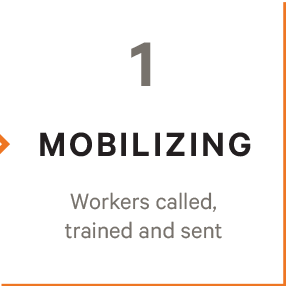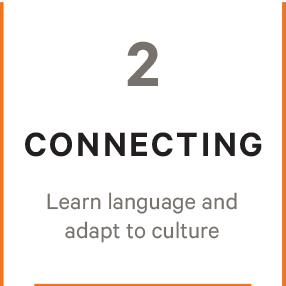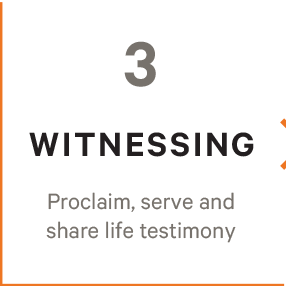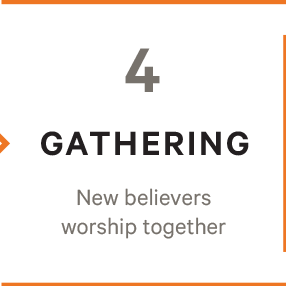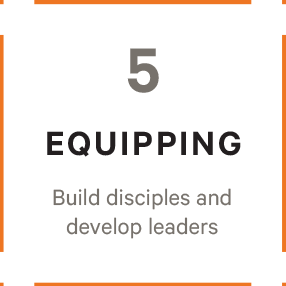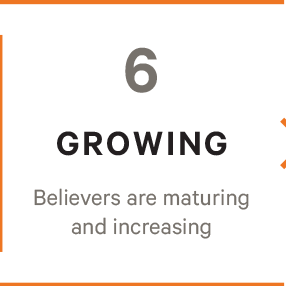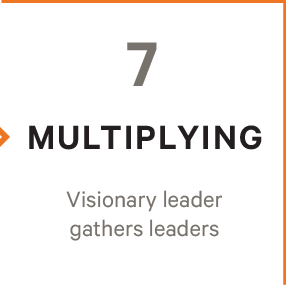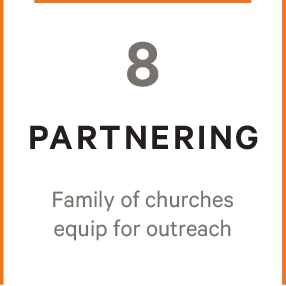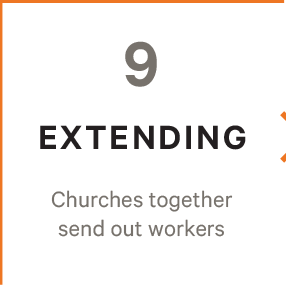Mission Strategy Map
Partnering with the local, national, and global Church
Mission Strategy Map
Partnering with the local, national, and global Church
Introduction
We exist to multiply disciples and churches together. Partnering with the local, national, and global Church, our end goal is that the world may know Jesus. The development of a mission strategy is an attempt to lay out the steps or stages to accomplishing what this vision could look like; it is an attempt to set direction for how the Mennonite Brethren church can participate in God’s mission.1 The identification of where a person or community is on the map provides an invitation to participate in mission together by using common language to describe a shared purpose. Knowing where one is on the map brings into focus what needs to be emphasized and points to where one is going. The map is strategic because it enhances how Multiply can build mutual relationships, more effectively provide support and resources, and intentionally work with individuals, churches, networks, and communities toward shared goals. While the challenge is to provide a comprehensive picture of Multiply’s involvement, this strategy is limited to how one small part of God’s global church understands their contribution to the much larger work of God in the world.2 This Multiply strategy is not intended to be an all-inclusive strategy for everything that God’s mission entails.
As you navigate this site/document, the following are key categories outlined in each stage:
-
Outcome: How do you know you have reached the transition from one stage to the next?
-
Key Person: Who is the key person or people in this stage?
-
How to Give: How can churches partner in giving in this stage?
-
How to Pray: How can churches and individuals partner in prayer?
-
How to Go: How can churches and individuals partner in sending more workers?
-
How to Partner: For mission champions and Missionary Advocate Teams, what are the best ways to come alongside the work in this stage?
In addition to these categories, a brief description of the stage as well as its biblical foundation is outlined.
About the Map
Multiply has developed this Strategy Map with nine stages along three rows (phases) that describe distinct aspects of their mission engagement – Making Disciples, Planting Churches, and Reaching Nations (see Figure 2). Each of these phases are descriptive, not prescriptive, of how God is seen working among Mennonite Brethren. The first phase (stages 1-3) follows the discipleship pathway of individuals or small teams of missionaries who are sent by the church. The second phase (stages 4-6) highlights the development of a local church community from its initial beginnings to maturity. The third phase (stages 7-9) represents the journey of a group of churches who join together in mission to reach nations. While these last three stages are typical of the emergence and work of national conferences who are part of the International Community of Mennonite Brethren (ICOMB), they also provide a common language to work with various networks and denominations.
Furthermore, each column also recognizes an inherent underlying theme that, when experienced together, points to what holds Mennonite Brethren together as a family of churches: Shared Identity, Shared Community, and Shared Mission. These themes highlight how participation in God’s mission must entail a holistic understanding of the nature of the church, out of which flows its engagement in mission. This suggests that failure to develop a shared confessional identity and healthy relationships with each other will severely hinder a community’s capability of effectively participating together in shared mission.
Laying a biblical foundation for the Multiply Strategy Map sets Mennonite Brethren reflections regarding strategic goals and ensuing mission practice within the context of the missio Dei revealed in 3Scripture. At the heart of a biblical strategy for participating in God’s mission is the desire to follow the direction the Triune God has already set by the example of Jesus and through the continuing work of his Spirit within the early church. The church today—as the people of God living under his reign, as the body of Christ, and as the new creation of the Spirit—is absolutely central to God’s mission strategy.
The Multiply Strategy Map identifies major stages or steps that move toward a desired goal—everything that is done is unto mission. 4Transition from one stage to another will entail three critical elements: first, a strategic set of outcomes to be completed for each stage; second, practical actions steps that enable workers or communities reach the outcomes they have established, and third, following the leading of the Spirit by living out his direction. While Multiply has identified a Primary Outcome for each of the nine stages (see Figure 3), there will likely be several major outcomes for each stage, depending upon a community’s cultural context or the situation they are facing. It is here, in the application of the Strategy Map within a particular community, where there is great flexibility regarding the development of outcomes and action steps as the Spirit leads.
However, it is also in the application of the Multiply Strategy Map that a biblical foundation provides shape to what God’s mission encompasses in practice. The Spirit through the Scriptures calls God’s people to engage in his mission, but he also challenges the cultural pressures, both in the East and the West, regarding what effective and successful mission looks like. Ultimately, our mission strategy is about what God is doing to reconcile the world to himself in Christ. In this light, a biblical foundation for mission is actually a vision for mission—how the church can participate in the mission of the Triune God.
Stage 1: Mobilizing>>
___________________________________
1 The ICOMB Confession of Faith states, “the church is called to participate in God’s mission,” See ICOMB,
“What We Believe.” For another example of mission strategy stages, see Craig Ott and Gene Wilson, Global Church Planting: Biblical Principles and Best Practices for Multiplication (Grand Rapids: Baker Academic, 2011).
2 For a description of how Mennonite Brethren have applied biblical teaching to their understanding of mission, see Doug Heidebrecht, “Mennonite Brethren and the Gospel: A Theology of Mission on the Way,” Direction 42:2 (2013), 207-228.
3The Biblical Foundation sections are adapted from Doug Heidebrecht, “Biblical Foundations for Mission Strategy,” (Paper presented at The Church on Mission: ICOMB Consultation, Thailand, March 7-11, 2017).
4Payne and Terry, Developing a Strategy for Missions, Kindle Locations 219-220.


